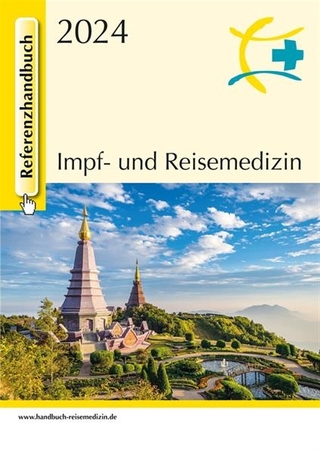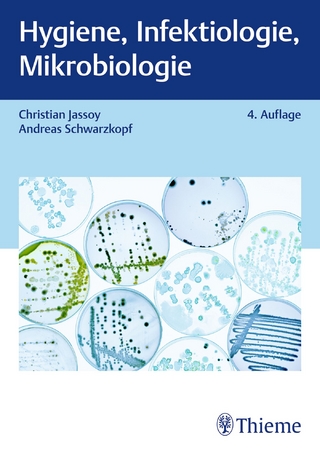
Gas Chromatography Mass Spectrometry Applications in Microbiology
Kluwer Academic/Plenum Publishers (Verlag)
978-0-306-41314-8 (ISBN)
- Titel ist leider vergriffen;
keine Neuauflage - Artikel merken
Some compound classes of a more general biochemical rather than specific microbiological importance, e.g., steroids and nucleotides, are dealt with briefly. The editors wish to thank all those who have contributed to this book. We hope it will stimulate further research in this futuristic field and will be of practical value.
I. Introduction to Gas Chromatography/ Mass Spectrometry and Applications in Microbiology.- 1 Gas Chromatography.- 1. Introduction.- 2. Gas Chromatographie Separation Theory.- 3. Columns.- 3.1. Packed and Capillary Columns.- 3.2. Stationary Phases and Supports.- 4. Sample Injection.- 4.1. Injection onto Packed Columns.- 4.2. Injection onto Capillary Columns.- 4.3. Syringe Technique.- 5. Detectors.- 6. Applying Gas Chromatography.- References.- 2 Mass Spectrometry.- 1. Introduction.- 2. Methods of Ionization.- 2.1. Electron Impact.- 2.2. Chemical Ionization.- 2.3. Field Ionization.- 2.4. Atmospheric Pressure Ionization.- 2.5. 252Cf Plasma Desorption.- 2.6. Secondary Ion Mass Spectrometry.- 2.7. Fast Atom Bombardment.- 3. Further Aspects of Ion Formation.- 3.1. Metastable Ions.- 3.2. Negative Ions.- 4. Separation of Ions.- 4.1. Magnetic Instruments.- 4.2. Quadrupole Instruments.- 4.3. Time-of-Flight Instruments.- 4.4. Fourier Transform/Ion Cyclotron Resonance Instruments.- 5. Ion Detection.- 5.1. Electron Multipliers.- 5.2. Photographic Detection.- 6. Introdution of Sample.- 6.1. Direct Inlet.- 6.2. Gas Chromatography.- 6.3. Liquid Chromatography.- 6.4. Reservoir.- 7. Use of Computers.- 7.1. Computer Control of Low-Resolution Mass Spectrometers and Data Acquisition.- 7.2. High-Resolution Data Acquisition.- 7.3. Repetitive Scanning.- 7.4. Library Searching.- References.- II. Analysis of Microbial Constituents.- 3 Fatty Acids and Complex Lipids Cecile.- 1. Fatty Acids.- 1.1. Preparation of the Samples.- 1.2. Structural Information Given by GC Analysis.- 1.3. Structural Information Given by Mass Spectrometry.- 1.4. GC/MS Analysis of Microbial Fatty Acids.- 2. Aliphatic Hydrocarbons.- 3. Terpenic Derivatives and Sterols.- 3.1. Aliphatic Terpene Alcohols.- 3.2. Sterols and Polycyclic Terpene Alcohols.- 4. Sphingosine Derivatives.- 5. Complex Lipids.- 5.1. Phospholipids.- 5.2. Glycolipids.- 5.3. Lipoamino Acids and Peptidolipids.- 6. Conclusion.- References.- 4 Carbohydrates.- 1. Introduction.- 2. Derivatives from Monofunctional Reagents of the Cyclic Forms of Monosaccharides.- 2.1. Formation of Derivatives and GC Separations.- 2.2. Electron Impact Mass Spectra of Trimethylsilyl Ethers, Methyl Ethers, and Acetate Derivatives of Monosaccharides.- 2.3. Chemical Ionization Mass Spectra of Trimethylsilyl Ethers, Methyl Ethers, and Acetate Derivatives of Monosaccharides.- 2.4. Trimethylsilyl Derivatives of Partially Acylated Sugars.- 3. Derivatives of Acyclic Forms of Carbohydrates.- 3.1. Alditol Acetates.- 3.2. Other Derivatives of Polyols.- 3.3. Aldononitrile Peracetates.- 3.4. Oxime Derivatives.- 3.5. Derivatives of Thioacetals and Thioketals.- 4. Cyclic Derivatives of Monosaccharides and Polyols.- 4.1. Boronic Esters.- 4.2. Cyclic Acetals and Ketals.- 5. Oligosaccharide Derivatives.- 5.1. Permethylated Oligosaccharides.- 5.2. Pertrimethylsilylated Disaccharides.- 5.3. Peracetates of Disaccharides (Aldohexosyl-Aldohexoses).- 5.4. Derivatives of Oligosaccharide Alditols.- 6. Conclusion.- References.- 5 Amino Acids and Peptides.- 1. Introduction.- 2. Amino Acids.- 2.1. Free Amino Acids.- 2.2. Derivatized Amino Acids.- 2.3. Applications.- 3. Peptides.- 3.1. Identification of Classical Sequencing Products.- 3.2. Sequencing Based on Peptide Bond Modification.- 3.3. Sequencing Using Dipeptidyl Aminopeptidases.- 3.4. Miscellaneous Peptide Derivatives.- 3.5. General Applications.- 4. Specialized Mass Spectrometric Techniques.- 5. Conclusions.- References.- III. Applications.- 6 Analysis of Volatile Metabolites in Indentification of Microbes and Diagnosis of Infectious Diseases.- 1. Introduction.- 2. Preparation of Specimens for Analysis of Microbial Volatiles.- 2.1. Direct Injection of Aqueous Solutions.- 2.2. Solvent Extraction.- 2.3. Head-Space Analysis.- 2.4. Adsorption Followed by Chemical or Thermal Desorption.- 2.5. Other Methods.- 3. GC Analytic Conditions.- 3.1. Packing Materials. Columns.- 3.2. Detectors.- 4. Analysis of Microbial Volatiles in Spent Culture Media.- 4.1. Direct Injection of Culture Media.- 4.2. Solvent Extraction.- 4.3. Direct Head-Space Analysis.- 4.4. Other Methods.- 5. Direct Analysis of Volatiles in Body Fluids.- 5.1. Direct Injection of Body Fluids.- 5.2. Solvent Extraction.- 5.3. Direct Head-Space Analysis.- 5.4. Other Methods.- References.- 7 Head-Space/Gas-Liquid Chromatography in Clinical Microbiology with Special Reference to the Laboratory Diagnosis of Urinary Tract Infections.- 1. Analysis by Head-Space/Gas-Liquid Chromatography.- 1.1. Indirect Analysis.- 1.2. Direct Analysis.- 2. Suitability of Direct Head-Space/Gas-Liquid Chromatography for Rapid Tests.- 3. Discovery of Specific Products to Act as Head-Space/Gas-Liquid Chromatography Markers for the Rapid Detection of Bacteria as Exemplified by Common Urinary Tract Pathogens.- 3.1. Ethanol as Marker for Escherichia coli and Related Species.- 3.2. Methyl Mercaptan and Dimethyl Disulfide as Markers for Proteus spp.- 3.3. Production of Markers in Mixed Cultures.- 3.4. Trimethylamine as Marker for Some Proteus spp.- 3.5. Necessity for Mass Spectrometry.- 4. Same-Day Head-Space/Gas-Liquid Chromatography Test on Urine Specimens.- 4.1. Introduction.- 4.2. Examples of Chromatograms Produced by Urine Specimens.- 5. Antibiotic Susceptibility Tests Using Head-Space/Gas-Liquid Chromatography.- 6. Comparison Between Same-Day Head-Space/Gas-Liquid Chromatography Test and Other Rapid Tests of Urinary Tract Infections.- 7. Conclusion.- References.- 8 Analysis of Cellular Components in Bacterial Classification and Diagnosis.- 1. Introduction.- 1.1. General.- 1.2. Cellular Substances of Diagnostic Potential.- 1.3. Current GC Approaches in Bacterial Taxonomy.- 2. Instrumentation.- 2.1. Gas Chromatograph.- 2.2. Detectors.- 2.3. Columns.- 2.4. Integrator-Recorder.- 2.5. Ancillary Equipment.- 2.6. Gas Chromatograph/Mass Spectrometer.- 3. Methods.- 3.1. Growth and Harvesting of Bacteria.- 3.2. Methanolysis, Hydrolysis, and Saponification.- 3.3. Derivatization of Hydroxylated Fatty Acids.- 3.4. Combined Analysis of Fatty Acids and Monosaccharides.- 3.5. Analysis of Fatty Acids Released by Methanolic HCl.- 3.6. Rapid Analysis of Fatty Acid Released by Saponification.- 3.7. Analysis of Monosaccharides.- 3.8. GC Conditions.- 4. Applications in Classification.- 4.1. Lipid Constituents.- 4.2. Sugars and Amino Acids.- 4.3. Influence of Growth Conditions.- 4.4. Taxonomic Resolution.- 5. Diagnostic Implications.- 5.1. General Discussion.- 5.2. Glucose Nonfermenters.- 5.3. Species of Neisseriaceae.- 5.4. Slow-Growing Mycobacteria.- 5.5. Detection of Bacterial Constituents in Clinical Material.- 6. Conclusions.- References.- 9 Quantitative Mass Spectrometry and its Application in Microbiology.- 1. Introduction.- 2. Mass Spectrometry.- 2.1. Methods of Ionization.- 2.2. Mass Filters.- 2.3. Extracted Ion Current Profile (EICP).- 2.4. Selected Ion Monitoring (SIM).- 3. Sample Handling.- 3.1. Pretreatment of Sample.- 3.2. Introduction of Sample Using Gas Chromatography (GC).- 3.3. Introduction of Sample Using Liquid Chromatography (LC).- 3.4. Direct Sample Introduction.- 4. Quantification.- 4.1. Calibration.- 4.2. Method of Standardization.- 4.3. Accuracy and Precision.- 4.4. Sensitivity and Detection Limit.- 4.5. Specificity.- 5. Applications.- 5.1. Clinical Microbiology.- 5.2. Ecological Microbiology.- 6. Conclusions.- References.- 10 Analytical Pyrolysis in Clinical and Pharmaceutical Microbiology.- 1. Introduction.- 2. Methods.- 2.1. Pyrolysis Techniques.- 2.2. Analytical Systems.- 3. Reproducibility.- 3.1. Culturing and Sampling.- 3.2. Pyrolysis.- 3.3. Pyrolyzate Transfer.- 3.4. Analytical System.- 4. Data Processing.- 4.1. Introduction ...- 4.2. Data Handling Packages.- 4.3. Visual Interpretation.- 4.4. The FOMPYR Package.- 4.5. Factor/Discriminant Analysis.- 5. Applications.- 5.1. Introduction.- 5.2. Streptococcus.- 5.3. Neisseria.- 5.4. Escherichia.- 5.5. Klebsieila.- 5.6. Yersinia.- 5.7. Salmonella.- 5.8. Vibrio.- 5.9. Pseudomonas.- 5.10. Bacillus.- 5.11. Clostridium.- 5.12. Mycobacterium.- 6. Conclusion.- References.- 11 Volatile C1-C8 Compounds in Marine Sediments.- 1. Introduction.- 2. Methods.- 2.1. Sample Collection and Storage.- 2.2. GC Analysis.- 2.3. GC/MS Analysis.- 3. Typical Results and Interpretation.- 3.1. Potential Sources of Votatile Organic Compounds in Marine Sediments.- 3.2. Examples.- References.- 12 Mass Spectrometry of Nitrogen Compounds in Ecological Microbiology.- 1. Introduction.- 2. Structure Determination.- 2.1. Cell Wall Components.- 2.2. Uptake and Exudation of Amino Acids.- 2.3. Stimulatory and Inhibitory N-Compounds.- 3. Isotope Mass Spectrometry.- 3.1. Analytical Methods.- 3.2. Isotope Fractionation.- 3.3. Assimilation Studies.- 3.4. Mineralization Studies.- 3.5. Microbial Synthesis of 15N Amino Acids.- 4. Conclusion.- References.
| Zusatzinfo | 77 black & white illustrations, biography |
|---|---|
| Sprache | englisch |
| Gewicht | 848 g |
| Themenwelt | Medizin / Pharmazie ► Medizinische Fachgebiete ► Mikrobiologie / Infektologie / Reisemedizin |
| Naturwissenschaften ► Biologie ► Evolution | |
| Naturwissenschaften ► Chemie ► Analytische Chemie | |
| ISBN-10 | 0-306-41314-0 / 0306413140 |
| ISBN-13 | 978-0-306-41314-8 / 9780306413148 |
| Zustand | Neuware |
| Haben Sie eine Frage zum Produkt? |
aus dem Bereich


